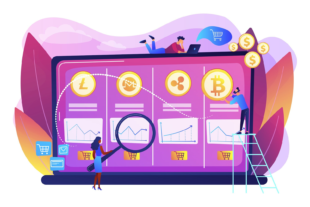An Easy-to-Follow Guide on Git Clone with a Personal Access Token

It is critical to know how to git clone with personal access token and other features of the distributed version control system Git because it is an integral part of the current development workflow. In order to help you clone a Git repository using a personal access token, this article will walk you through the steps.
Understanding Git Clone and Personal Access Tokens
First, let’s define “how to git clone with personal access token” so we can understand the instructions better. To replicate an existing Git repository from another location, you can use the git clone command. When logging into Git from the command line, a personal access token (PAT) provides an extra layer of security above passwords.
Why Use a Personal Access Token?
Priority one in today’s digital world is security. Security, control of access, and authentication can all be greatly improved with the use of Personal Access Tokens (PATs). Now we will explore the main benefits of using PATs:
Security
When it comes to security, personal access tokens are much better than passwords. Common vulnerabilities, like password reuse and brute force attacks, are mitigated by these. PATs improve safety in the following ways:
- Resistance to Brute Force Attacks: The fact that PATs are usually long, randomly generated strings makes them very resistant to brute force attacks;
- Protection Against Password Reuse: PATs are impenetrable to attacks that aim to reuse passwords since they are distinct from passwords;
- Ease of Revocation: Revocation and regeneration of PATs are simple processes, reducing the severity of a compromised token’s effect.
Control
With the help of personal access tokens, companies may efficiently implement the concept of least privilege by controlling access and permissions at a granular level. Let me explain how PATs provide control:
- Specified Access: Tokens can have their access to certain resources, APIs, or features defined by the user;
- Fine-Grained Permissions: With PATs, administrators may give users access to just the resources they need by assigning them specific scopes or rights;
- Reduced Risk: Organizations can lessen the likelihood of data breaches and illegal access by imposing access restrictions.
Convenience
Despite their enhanced security features, personal access tokens offer unparalleled convenience for users and developers. Here’s how PATs provide convenience:
- Easy Generation: Tokens can be easily generated and managed through user-friendly interfaces or command-line tools;
- Secure Storage: Once generated, tokens can be securely stored in credential managers or repositories, eliminating the need to memorize or frequently update passwords;
- Seamless Integration: PATs can be seamlessly integrated into automated scripts, applications, and services, streamlining authentication processes without compromising security.
Step-by-Step: How to Git Clone with Personal Access Token
Git cloning with a personal access token provides an added layer of security for accessing repositories hosted on Git services like GitHub, GitLab, or Bitbucket. Below is a detailed guide on how to clone a repository using a personal access token.
Step 1: Generate Your Personal Access Token
Before you can clone a repository using a personal access token, you need to generate one with the appropriate permissions. Follow these steps:
- Log in to Your Git Hosting Service: Visit the website of your Git hosting service (e.g., GitHub, GitLab);
- Navigate to Settings/Profile Section: Once logged in, navigate to the settings or profile section of your account;
- Find the Section for Personal Access Tokens: Look for the section specifically dedicated to managing personal access tokens within your account settings;
- Generate a New Token: Click on the option to generate a new token. You may be prompted to specify the permissions the token should have. Ensure that the token has sufficient permissions to perform the actions you intend to take, such as cloning repositories;
- Copy the Generated Token: Once generated, copy the token to your clipboard. Treat this token with care as it grants access to your repositories.
Step 2: Cloning the Repository
With your personal access token generated, you can now proceed to clone a repository using it. Follow these steps:
- Open Your Command Line Interface: Launch your preferred command line interface (CLI). This could be Terminal on macOS, Command Prompt on Windows, or any terminal emulator on Linux;
- Use the git clone Command: In the CLI, navigate to the directory where you want to clone the repository and use the git clone command followed by the repository’s URL. Ensure to replace username with your Git service username and repository-url with the URL of the Git repository;
| git clone https://[email protected] |
- Enter Your Git Service Username: When prompted for a username, enter your username associated with the Git hosting service;
- Use the Personal Access Token as Password: Instead of using your regular password, paste the personal access token you generated earlier when prompted for the password. This token will authenticate your access to the repository.
Step 3: Storing the Token Securely
To enhance convenience and security, you can consider storing your personal access token securely using a credential manager. Configure your Git client to utilize a credential manager that securely stores your access tokens. This way, you won’t have to enter the token manually every time you interact with your repository.
Advanced Tips and Tricks

When working with Git repositories, incorporating advanced techniques can enhance your workflow efficiency and security. Below are some advanced tips and tricks to optimize your Git usage:
Using Environment Variables
One effective method to enhance security is by storing your personal access token in an environment variable. Environment variables provide an extra layer of protection by keeping sensitive information out of your codebase. Follow these steps to set up environment variables:
- Define the Environment Variable: Assign your personal access token to an environment variable. For instance, you can name it GIT_TOKEN;
- Accessing Environment Variables: In your Git commands or scripts, reference the environment variable instead of hardcoding the token directly. For example:
| git clone https://username:${GIT_TOKEN}@github.com/username/repository.git |
- Security Benefits: Storing sensitive information like access tokens in environment variables reduces the risk of exposing them inadvertently, especially in public repositories or shared codebases.
Credential Helpers
Git provides a useful feature called credential helpers, which can remember your token or credentials, so you don’t have to repeatedly enter them. Here’s how to use Git’s credential helper:
- Configure Git Credentials: Set up Git to use a credential helper by running:
| git config –global credential.helper store |
- First-Time Authentication: The first time you interact with a remote repository that requires authentication, Git will prompt you to enter your credentials. Once entered, Git will store them locally;
- Automatic Authentication: Subsequent interactions with the same repository won’t require manual authentication as Git will automatically retrieve your credentials from the local store.
Common Issues and Solutions
Even with advanced techniques in place, encountering issues with access tokens is not uncommon. Here are some common problems and their solutions:
| Issue | Solution |
|---|---|
| Token Permissions | Ensure your token has the necessary permissions for the actions you intend to perform. Refer to the documentation of the service provider to understand the required permissions and adjust your token settings accordingly. |
| Expired Tokens | Check the expiry date of your token and renew it if necessary. Many service providers offer token management features to generate new tokens or extend existing ones before they expire. |
Conclusion
Understanding how to git clone with personal access token is an essential skill in modern software development. It enhances security, provides better control over access, and can streamline your development workflow. By following the steps and tips outlined in this article, you’ll be able to effectively clone Git repositories using a personal access token, ensuring a more secure and efficient development process.
FAQ
It’s a secure method used for authentication with Git services, replacing the traditional username and password.
Yes, but store them securely, preferably in a credential manager.
Yes, as long as the token has the correct permissions.
Revoke it immediately and generate a new one.
Yes, you will need to modify your scripts to use the token instead of a password.




